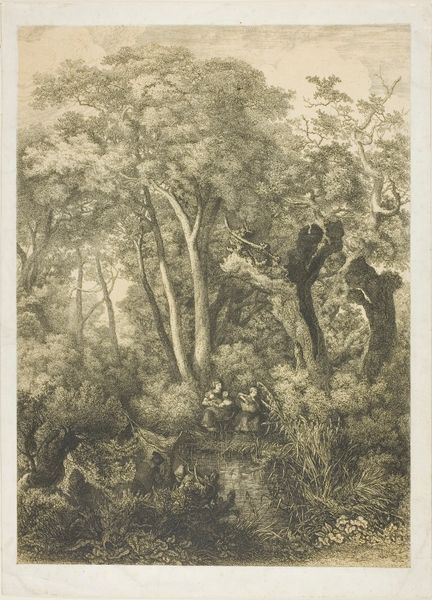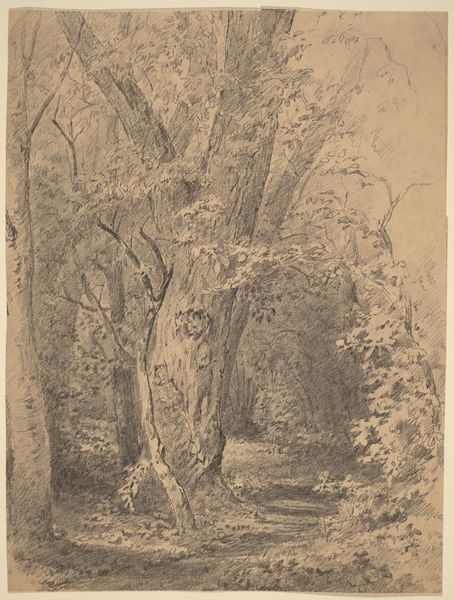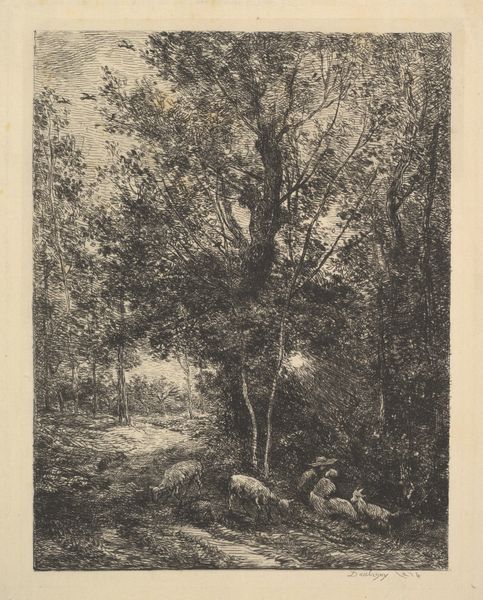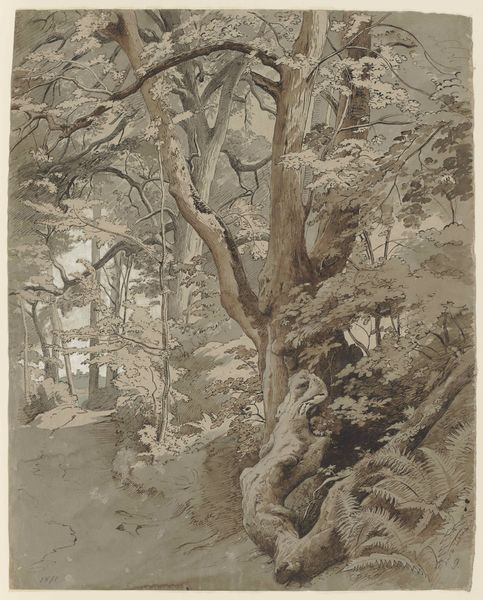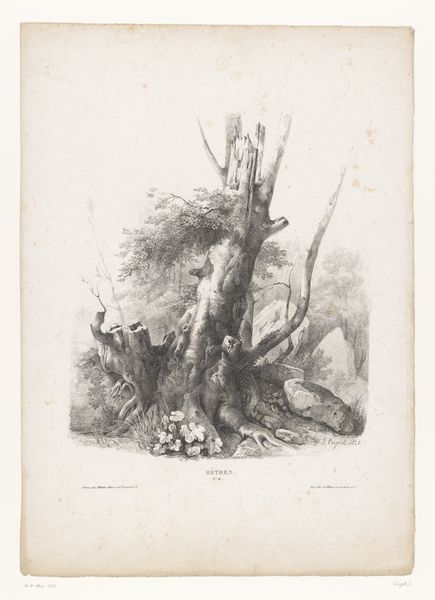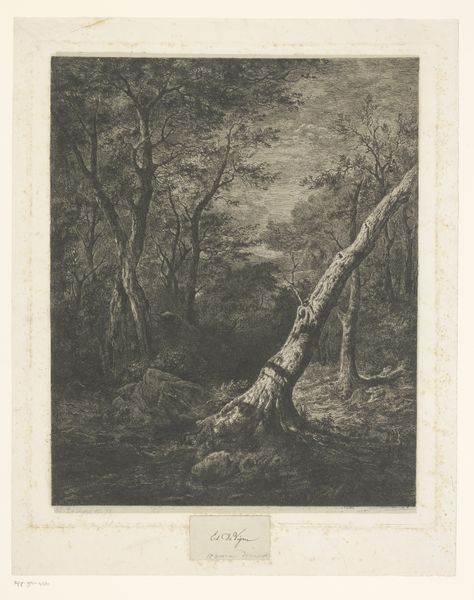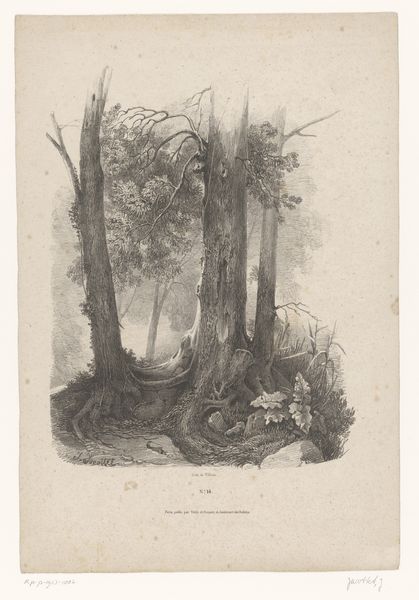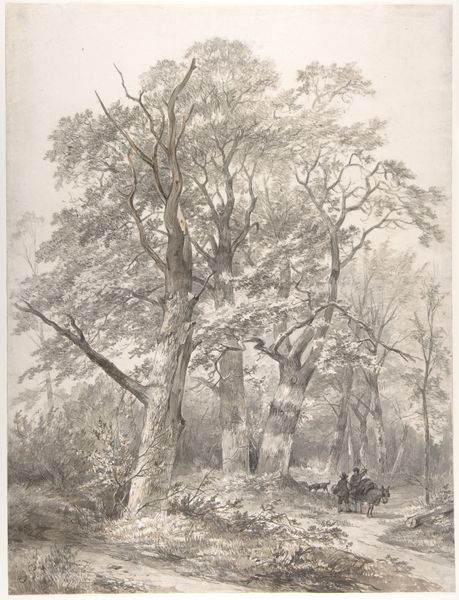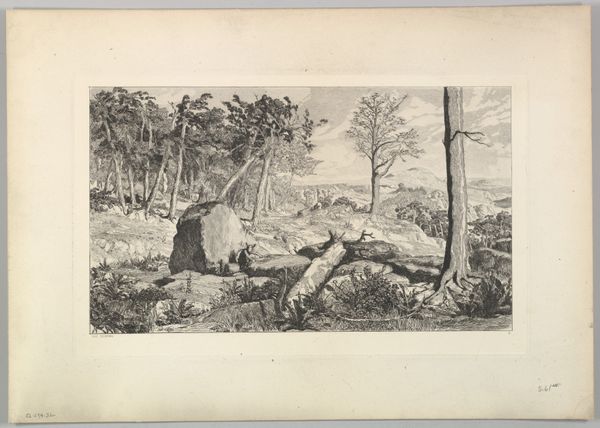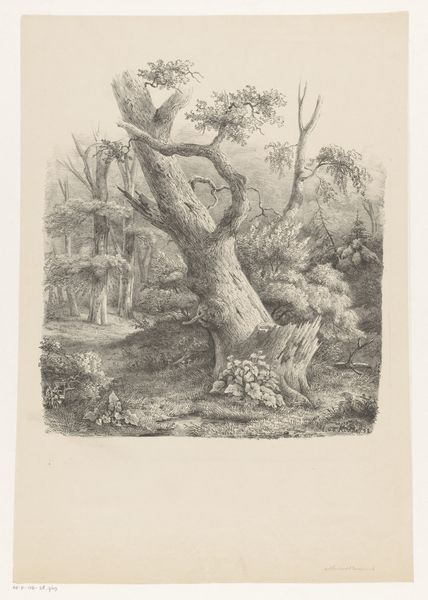
Dimensions: height 326 mm, width 231 mm
Copyright: Rijks Museum: Open Domain
Editor: This is "Fret loerend naar vogels op een boomstam," or "Ferret Looking at Birds on a Tree Trunk," created by Karl Bodmer in 1872. It’s a print made using pencil and engraving techniques, and I am drawn to the intricacy of the lines. What is your interpretation of this detailed landscape? Curator: The materiality here is key. Consider the labor involved in producing this image. Bodmer wasn’t just sketching; he was mastering complex printmaking processes. How does that production, turning nature into a reproducible image for consumption, influence your perception of the “romanticism” often ascribed to landscape art? Editor: That’s a great point! The romanticism feels somewhat manufactured when considering the printmaking. I was initially seeing just a tranquil natural scene, but I now realize there's the influence of labor practices. Were these prints widely circulated? Curator: Precisely. Think about who consumed these images and in what context. These weren’t singular artworks, but commodities. Also, consider the "realism" tag on it - how can we define that term in light of what we now know of photographic representation and image reproduction at the time? Editor: So, rather than solely focusing on the depicted scene, you’re prompting us to reflect on the methods and systems of distribution. That influences how people engaged with this type of imagery at the time. Curator: Exactly. We must consider the complete circuit of production and consumption to fully grasp its significance. The print isn’t just about a pretty nature scene; it's about how nature was being processed and sold. How has your understanding of landscape changed by understanding its commodification? Editor: This helps me understand how even seemingly straightforward nature scenes are connected to economic realities. Thanks! Curator: Likewise. It is exciting to view these images not as standalone aesthetic expressions but as intricate products of labor, commerce, and evolving visual technologies.
Comments
No comments
Be the first to comment and join the conversation on the ultimate creative platform.
